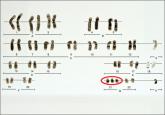Expert Commentary

Noninvasive prenatal testing: Where we are and where we’re going
Does noninvasive prenatal testing change our concepts of screening and diagnosis?
expert commentary
Mary E. Norton, MD, Professor and Vice Chair, Department of Clinical and Translational Genetics, and David E. Thorburn, MD and Kate McKee Thorburn Endowed Chair, Department of Perinatal Medicine and Genetics, University of California San Francisco Medical Center.
The author reports no financial relationships relevant to this article.

Not without appropriate patient counseling. This prospective, multicenter study of women at high risk for fetal aneuploidy found 100%, 100%, and 97.9% positive predictive values for trisomies 18, 13, and 21, respectively, and high sensitivity (>99%) for trisomy 21. However, the cases excluded from the final analysis—which included “complex” undetected chromosomal disorders—should be considered when analyzing these new data and considering use of this diagnostic technology.
Porreco RP, Garite TJ, Maurel K, et al. Noninvasive prenatal screening for fetal trisomies 21, 18, 13 and the common sex chromosome aneuploidies from maternal blood using massively parallel genomic sequencing of DNA. Am J Obstet Gynecol. 2014;211(4):365.e1−e12.
The introduction of cell-free fetal DNA (cfDNA) testing has had a tremendous impact on prenatal care. Numerous series reporting near-diagnostic accuracy for trisomy 21 detection have been reported,1 and several commercial laboratories offer clinical testing. Many patients now take advantage of these tests, and the very low false-positive rates have resulted in a marked decrease in the rate of invasive diagnostic testing.2 At present, most professional societies suggest that these tests be reserved for women at high risk for fetal aneuploidy.3
Details of the study
In this recent article by Porreco and colleagues, the researchers reported on a large cohort study of patients who had made the decision to undergo invasive diagnostic testing with chorionic villus sampling or amniocentesis prior to undergoing noninvasive testing, in order to validate the clinical performance of massively parallel genomic sequencing of cfDNA. As in several prior reports, the study authors found that the detection rate of cfDNA for trisomy 21 was 100%, and somewhat less for trisomy 18 (92%) and trisomy 13 (87%). The false-positive rate was very low, with only three false-positive results (all for trisomy 21) in 3,430 patients. Testing for fetal sex chromosomes reported 7 out of 3,322 errors in fetal sex and 100% detection of sex chromosomal aneuploidies, with 16 out of 3,200 false-positive results.
Study limitations
As in prior reports, limitations to the test were not clearly presented. Patients with “complex chromosomal abnormalities” not detectable by cfDNA were excluded from the reported cohort. Considering these cases, fewer of the total chromosomal abnormalities in the cohort were detected.
Also, adequate fetal DNA is necessary for accurate results, and patients with less than 4% fetal DNA were excluded. Low fetal DNA is associated with an increased risk of trisomy.4,5 Therefore, excluding such cases will bias results toward a higher detection rate.
The outcomes for cases of low fetal DNA were not included in this study, but in another recent paper 22% of cases of low fetal DNA had aneuploidy, and 16% of common aneuploidies were not detected because of failed testing.4
What this evidence means for practice
Cell-free fetal DNA is an exciting technology, and this study adds to the existing literature in the field. However, use of the test requires careful patient counseling regarding the limitations in detecting abnormalities other than trisomy 21, which comprises just 50% of all aneuploidies. Women who desire a comprehensive prenatal genetic assessment may prefer invasive diagnostic testing and should be counseled appropriately. Patients in whom the test fails should be informed that they are at high risk for a chromosomal abnormality.
Considering these outcomes, the benefits of prenatal screening with cfDNA over current testing alternatives, with serum analytes and/or invasive diagnostic testing, become less clear and the options more complex. Of primary importance is that patients understand the risks and benefits of alternative tests.
—Mary E. Norton, MD
Share your thoughts on this article! Send your Letter to the Editor to rbarbieri@frontlinemedcom.com. Please include your name and the city and state in which you practice.

Does noninvasive prenatal testing change our concepts of screening and diagnosis?
Breaking news and highlights from ACOG's Annual Clinical Meeting in Chicago, Illinois

ACOG aims to clarify best practices in managing hypertension in pregnancy. Here, changes to note. PLUS, "Don't throw out that CVS kit just yet!"...

A survey of ACOG Annual Clinical Meeting attendees on the issues they are facing with this new technology New Orleans, Louisiana, May 2013
The drive to do more and do it faster continues, leading to notable advances in prenatal diagnosis and fetal therapy, but is not sustainable over...
